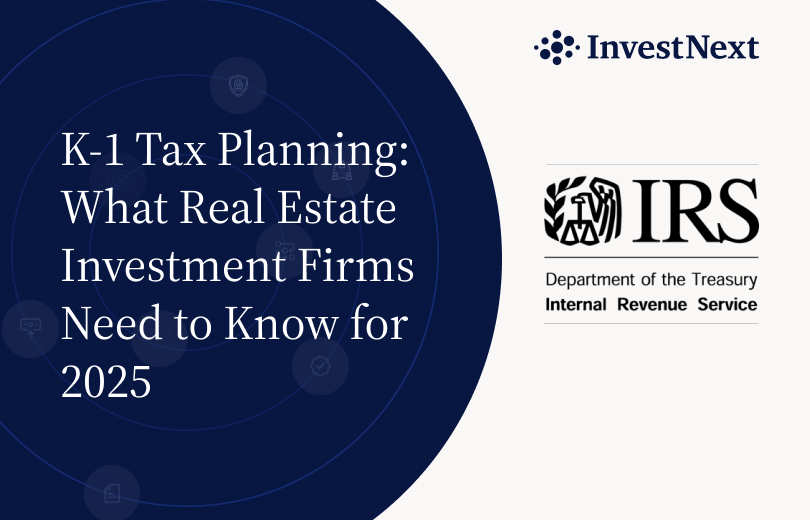A 10% error in commercial property valuation could mean millions in lost investment value.
Commercial real estate investing demands accurate property comparables. These comparables determine the difference between a profitable deal and a mistake that can get pricey. Becoming skilled at analyzing commercial real estate comps will help you find better deals and the opportunity to generate better returns for your investors.
Your last property evaluation probably taught you something valuable. Finding the right commercial property comparables goes beyond matching building types. The process requires deep knowledge of market dynamics, financial metrics, and property characteristics that make deals truly comparable.
This piece walks you through five practical steps to find and analyze commercial property comps. The steps work for both new investors evaluating their first commercial property and seasoned professionals wanting to improve their analysis process.
Let’s tap into the techniques to help you make smarter investment decisions.
The Foundation of Commercial Property Analysis
Becoming skilled at analyzing commercial real estate comps begins with understanding their basic elements. Your expertise in analyzing property comparables will affect investment decisions and valuation accuracy.
Key Components of a Quality Comp
Quality commercial property comparables share everything that ensures reliable comparison:
- Location Proximity: Properties within the same submarket or similar area
- Transaction Timing: Sales or leases executed in the last 6-12 months
- Physical Attributes: Similar size, age, quality, and amenities
- Financial Metrics: Comparable cap rates, NOI, and operational costs
- Property Use: Same category (office, retail, industrial, etc.)
Sales Comps vs Lease Comps
The analysis approach differs between sales and lease comparables. Sales comps reveal market value through recent transaction prices and cap rates. They give vital insights for property acquisition and disposition decisions.
Lease comps spotlight rental rates, terms, and tenant quality. These help project potential ROI and reveal market rental trends. Treasury Secretary Janet Yellen’s report highlighted that at least $2.30 billion moved through U.S. real estate between 2015 and 2020, which shows the importance of precise comp analysis.
Market Context Requirements
Market context shapes comp analysis substantially. Recent data shows that geopolitical uncertainties affect 65% of industry stakeholders, while inflation and economic stagnation worry 57% of real estate professionals.
A thorough market analysis should examine:
- Current supply and demand dynamics
- Vacancy rates in the submarket
- Overall economic stability
- Recent market trends
Properties with clean environmental records and regulatory compliance receive higher appraisal values. Modern, well-maintained properties typically appraise higher because they have reduced maintenance costs and increased tenant satisfaction.
Data Collection Best Practices
Quality data collection and verification determine your success in commercial real estate analysis. Property managers spend up to 80% of their time collecting and working with data. Quick data collection practices will boost your investment success.
Essential Property Metrics
Your commercial property analysis needs specific data points to make accurate comparisons. Here are the metrics you must collect:
- Sale price and price per square foot
- Net Operating Income (NOI)
- Capitalization rates
- Operating expense ratios
- Tenant mix and lease terms
- Physical characteristics
- Transaction dates
Documentation Standards
Each comparable property needs complete documentation. Public records indicate that proper documentation should cover transaction data, ownership details, and mortgage information. Your records should follow standards and remain available for future use.
Quality documentation needs both technical and business checks. Technical checks confirm your data meets format requirements. Business checks verify that everything lines up with your organization’s standards.
Data Verification Methods
Here are the steps you need to verify your commercial property comp data:
- Cross-reference multiple data sources
- Check property characteristics
- Confirm transaction details
- Review market conditions at sale time
- Check tenant information
Your verification should look at the property’s sales history and any unusual circumstances. To cite an instance, a rushed sale due to urgent funding needs might not show true market value.
Note that data checks become harder with comps older than six months. You might need to widen your geographical search while focusing on properties that match your core parameters.
Automated validation rules can catch data quality issues before they impact your analysis. This helps your commercial real estate comps stay consistent in regions and asset classes of all types.
The Market Analysis Framework
The foundations of accurate commercial property comparisons lie in your market analysis framework. Let’s get into the three key components that shape your review process.
Location and Submarket Assessment
The competitive position of your property in the market depends on its location. Your commercial real estate comp analysis should focus on properties that match your location criteria, usually within the same submarket or close to your subject property.
Properties in unique locations or areas with limited transactions require you to:
- Expand your search to similar submarkets
- Adjust for market differences
- Think about proximity to transportation hubs
- Review local economic indicators
Property Class Considerations
Property classification substantially affects your comp selection. The Building Owners and Managers Association International (BOMA) categorizes commercial properties into three distinct classes:
Class A Properties:
- Buildings less than 15 years old or renovated recently
- Premium locations near business districts
- High-end amenities and modern systems
- Draw creditworthy tenants
Class B Properties:
- Buildings in fair to good condition showing age
- Good access to amenities
- Practical designs from earlier decades
- Moderate rental rates
Class C Properties:
- Buildings typically 30+ years old
- Limited amenity access
- Need major rehabilitation
- Below-market rents
Tenant Mix Evaluation
The property’s performance and income potential depend on your tenant mix analysis. A careful assessment of the tenant profile matters during commercial real estate comp evaluation. Quality tenants show these characteristics:
| Tenant Factor | Impact on Property Value |
| Credit Rating | Affects financing terms |
| Lease Length | Influences stability |
| Industry Type | Determines risk profile |
| Market Share | Impacts property prestige |
Note that your property’s income potential ties directly to tenant quality and stability. National brands with long-term leases typically occupy Class A properties, while Class B and C properties often house smaller or local tenants, leading to higher turnover rates.
Your analysis should track tenant movement requirements throughout the year and identify clustering opportunities that balance the property. This approach to tenant mix helps boost occupancy and maximize income potential.
Financial Metrics That Matter
Financial metrics are the foundations of your commercial property comparison analysis. You need to focus on three critical metrics at the time of evaluating commercial real estate comps.
Cap Rate Analysis
Cap rates help you assess risk and potential return on your commercial property investments. You can calculate a property’s cap rate by dividing its net operating income by its current market value. Higher cap rates usually signal higher risk and potentially higher returns.
Here are key market insights for your cap rate analysis:
- Class A properties in stable markets: 4-6% cap rates
- Class B properties in growing markets: 6-8% cap rates
- Class C properties or transitional areas: 8-10% cap rates
NOI Comparison Methods
Net Operating Income is crucial to your property valuation process. Your NOI analysis should get into:
- Gross Operating Income
- Rental income
- Parking fees
- Service charges
- Operating Expenses
- Property management fees
- Maintenance costs
- Property taxes
- Insurance
A higher NOI points to stronger operational performance. Your analysis must factor in market conditions and property management efficiency.
Operating Expense Ratios
The Operating Expense Ratio (OER) shows your property’s management efficiency. Standard industry guidelines suggest your OER should be close to 50%. An OER substantially above this standard might point to operational inefficiencies, while ratios well below could indicate could indicate possible underreporting or deferred maintenance. The following table provides a benchmark for comparing different OER ratios:
| OER Range | Potential Indication |
| >57% | Operational inefficiencies |
| 45-55% | Normal operating range |
| <40% | Possible underreporting or deferred maintenance |
Your property’s OER helps spot cost-saving opportunities and verifies expense structures across comparable properties. Take two similar properties with 46% versus 56% OER – this gap calls for deeper investigation into specific expense categories like property management fees or insurance costs.
Note that a lower OER usually means better operational efficiency, but very low ratios might indicate poor property maintenance or incomplete expense reporting. You should look into specific line items if OERs differ substantially from market norms.
Adjustment Techniques for Accuracy
Accurate property valuations depend on precise adjustments to your commercial real estate comps. Studies reveal that appraisers often miss vital adjustments. These oversights can affect property values by 2.5% to 9%.
Time-Based Adjustments
Time adjustments help you track market changes between comparable sale dates and your valuation date. Less than 10% of appraisers make time adjustments in stable markets. Your analysis should get into:
- Market appreciation or depreciation rates
- Changes in local economic conditions
- Changes in property demand
- Interest rate fluctuations
You should adjust comparable sales older than six months to maintain accuracy. Recent data shows time adjustments become critical when market conditions change faster. Adjustment rates can reach up to 1.6% monthly in appreciating markets.
Physical Characteristic Modifications
Physical adjustments help balance differences between properties. These key factors matter when modifying comparable values:
| Adjustment Factor | Impact on Value |
| Size Variance | ±25% max difference |
| Building Age | Based on condition |
| Quality Grade | Class A, B, or C |
| Amenities | Feature-specific |
Properties with similar amenities and features tend to sell within a narrower price range. Your adjustments should show both qualitative and quantitative differences between properties.
Market Condition Factors
Market conditions affect your property valuations by a lot. Research shows 65% of industry stakeholders think over geopolitical uncertainties during property evaluation. Your market condition analysis must look at:
Local Market Dynamics
- Employment rates and trends
- Consumer demand patterns
- Transportation infrastructure
- Demographic changes
Property-Specific Factors
- Vacancy rates in the submarket
- Tenant mix quality
- Operating expense ratios
- Building code compliance
Metropolitan markets have various submarkets where property values react differently to market conditions. Different property sectors respond uniquely to economic factors. Office space demand associates strongly with office-related employment. Retail space responds more to consumer spending patterns.
A well-laid-out approach to your adjustments will give you maximum accuracy. Data shows reliable valuations come from careful calibration of adjustment factors using statistical analysis and market experience. Keep your adjustment process consistent while accounting for unique property characteristics that affect value.
Conclusion
Accurate commercial real estate comp analysis is your best tool to make informed investment decisions. Success depends on becoming skilled at every element – quality data gathering, market dynamics understanding, precise financial metrics and adjustment techniques.
Property comparison needs detailed attention in multiple areas. Market conditions, tenant profiles and location features play significant roles in valuation. Small oversights in analysis can substantially affect investment outcomes.
A systematic approach to commercial property comps should blend data collection, market assessment and precise financial analysis. This complete strategy helps identify opportunities and minimize investment risks. Quality data verification, consistent documentation standards and updated market knowledge will keep your commercial real estate decisions sound and profitable. Follow this link to keep learning more about real estate fundamentals.
FAQs
What are the key factors to consider when analyzing commercial real estate comps?
When analyzing commercial real estate comps, focus on location proximity, transaction timing, physical attributes, financial metrics, and property use. Consider properties in the same submarket, with similar size and age, and comparable financial performance for the most accurate comparisons.
How can I find reliable commercial real estate comparables?
To find reliable commercial real estate comparables, look for properties within the same zip code or submarket. Examine recent sales history, as it provides the most precise source for comparisons. For land comps, which can be challenging due to lack of income generation, focus on location and physical characteristics.
What financial metrics are crucial in commercial property comparison?
Key financial metrics for commercial property comparison include capitalization (cap) rates, Net Operating Income (NOI), and Operating Expense Ratios (OER). Cap rates help assess risk and potential return, NOI indicates operational performance, and OER reveals management efficiency.
How do I determine if a commercial property is a good investment?
To determine if a commercial property is a good investment, calculate its capitalization rate by dividing the net operating income by the asking price and multiplying by 100. This percentage can be a good indicator of the property’s potential. Also, consider factors like location, tenant mix, and market conditions.
What adjustments should I make when comparing commercial properties?
When comparing commercial properties, make time-based adjustments for market changes, physical characteristic modifications for differences in size or amenities, and market condition factor adjustments. Consider local economic conditions, property-specific factors like vacancy rates, and unique characteristics that impact value. Consistent and careful calibration of these adjustments leads to more reliable valuations.









